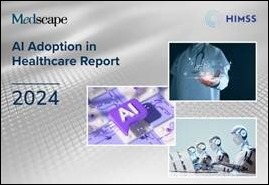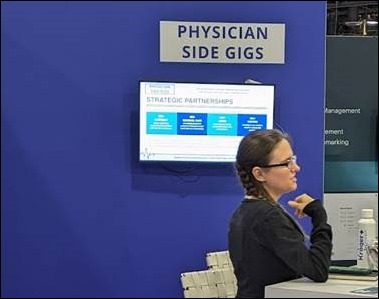EPtalk by Dr. Jayne 12/12/24
The US Department of Health and Human Services recently launched the National Healthcare Safety Dashboard that tracks patient and workforce harm. The goal is to monitor patient safety indicators so that improvement can result. It draws data from the HHS Agency for Healthcare Research and Quality (AHRQ) including its Hospital Patient Safety Indicators, Hospital Medicare Adverse Events, and Surveys on Patient Safety Culture (SOPS) Hospital Survey. It also pulls from the CMS Hospital Reporting Program Safety Measures. Hospitals and health systems have been trying to reduce preventable harms for decades and hopefully the additional transparency from such a dashboard will better support those efforts. Future plans include dashboards for other care settings including nursing facilities and ambulatory care sites.
I took a peek at the Hospital Patient Safety Culture Survey (SOPS) data, and although the results weren’t surprising, they were still disheartening. Some of the least-positive scores were around Staffing and Work Pace, Response to Error, and Hospital Management Support for Patient Safety. A number of research articles have listed topics like these as contributing to care team burnout and I hope that institutions are making plans to address them. The most recently displayed data in the dashboard was from 2022. I’d love to see more public information on what staff members think about the culture of the institutions where they work and whether hospital leadership becomes more responsive when light is shining on those kinds of concerns. If you’re working in this space, feel free to reach out.

In conjunction with HIMSS, Medscape has released its 2024 AI Adoption in Healthcare Report. I was saddened to see it delivered in a format I detest, that being a 22-item, web-based slide show. Results are from “a jointly managed survey to practicing physicians and other clinicians, practicing nurses, IT professionals, clinical leadership, and executive leadership at medical organizations” in the US. That’s pretty vague and I was looking forward to seeing increased stratification of the findings based on the type of medical organization – care delivery, payer, software developer, etc. – since all of those are technically medical organizations. Highlights from the survey that should surprise no one: AI is most frequently used with administrative tasks, it’s producing solid results for transcription for everything from meeting notes to patient documentation, and a large number of respondents are concerned about data privacy and/or ethical issues.
Other facts I wasn’t expecting: only 24% of employers are providing AI training, physicians are less likely to use AI away from the office than non-physician respondents, and 28% of physicians believe it will eventually replace the need for human doctors. Looking at respondent demographics, almost a third were nurses and nearly two-thirds worked in hospitals, so I’m not sure this is representative of medical organizations as a whole. Only 1% of respondents were healthcare IT, however. The data wasn’t further stratified by those groups, so it’s really a limited view into the issue. It was one of those attention-grabbing articles, and given the report’s sponsors, I didn’t expect much more from it than a superficial review of the topic.
From The Mitten: “Re: new scam. People are offering fake jobs.” The scam was mentioned in a security bulletin from Michigan’s Munson Healthcare. Scammers are “imitating Munson human resources’ leaders offering people false jobs and sending them fraudulent checks to purchase their own equipment.” From the information available, I can’t seem to figure out what else was involved in the scam, whether it involved theft of financial information related to the phony checks or something else. If you know more about it, feel free to share with the rest of the class.
The year is coming to a close and most of my time now is spent gearing up for 2025. A new year always brings new opportunities. I had the chance to catch up with a friend who works as a healthcare IT consultant and she mentioned that work at her current consulting gig has just about ground to a halt. It seems that all the people who didn’t take their allotted vacation time throughout the year are racing to try to take it before the “use it or lose it” deadline of December 31 and it’s a ghost town as far as finding people with whom to collaborate. It’s a bit surprising to me since this is a care delivery organization that needs to make sure that essential functions are covered, but I guess that as long as they have one person around to field support calls, they’re OK with it.
I’ve worked in organizations with all kinds of vacation policies, some of which make it difficult for employees to take time off on their preferred schedules. One employer had a strict accrual policy that started over each year, essentially preventing anyone from taking a full week of vacation in the early parts of the year. Others have had accrual policies, but allowed you to use vacation in advance of the actual accrual, adding flexibility. I’ve also worked in organizations with unlimited time off, which can be good or bad depending on the company culture and how such a program is administered.
I’m not a fan of use it or lose it plans that are tied to the calendar year since life sometimes doesn’t always deal us opportunities on that kind of schedule. I get that you don’t want people banking ridiculous amounts of vacation, which means that they’re not taking the time they should in order to relax and recharge. On the other hand, it would be great to take a multi-week trip to celebrate a marriage, milestone birthday, or other life event without having to time it to a certain part of the year.
Of all the arrangements I’ve worked under, my favorites are either a well-administered plan for unlimited time off that ensures that employees actually take it, or one that lets employees roll vacation over from year to year as long as they don’t exceed a certain number of banked hours. Either way, those require adequate involvement from managers to ensure that people are taking time away at regular intervals, and it seems that some organizations don’t want the hassle of either.
What kind of vacation or time off plan does your organization have? Does it meet your needs or do you wish you had something different? Leave a comment or email me.

Email Dr. Jayne.
















The CEO sentenced to jail for massive healthcare fraud will get pardoned in a week.